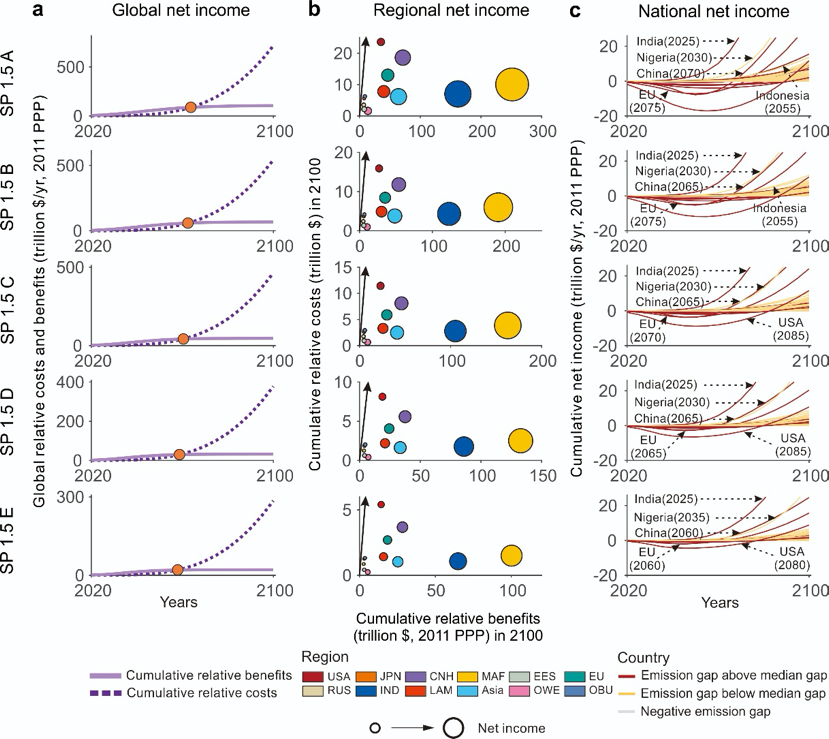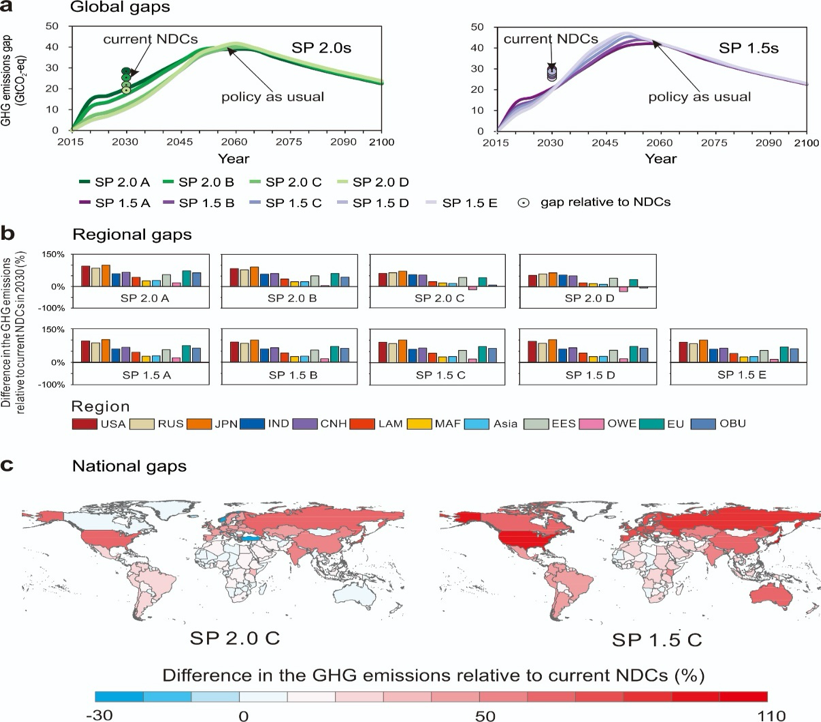
On April 14, 2020, the latest research of the Center for Energy and Environmental Policy Research of the Beijing Institute of Technology " Self-preservation strategy for approaching global warming in the post-Paris Agreement era", was published online in nature communications as a research article. At the same time, Nature will promote the paper to the media (only 1% of research articles are selected for publication in Nature series journals each year).
This work is based on long-term cooperation between Professor Wei Yi-Ming, Professor Yu Biying, Professor Liang Qiaomei, etc., the research results have been achieved under the support of national missions such as the National Key R & D Program Project (2016YFA0602600) "Research on the Comprehensive Assessment Model of the Economic Impact of Climate Change" and the National Natural Science Foundation Innovation Research Group Project (71521002) led by Professor Wei Yi-Ming. Professor Wei Yi-Ming is the first author and corresponding author of the article, and Beijing Institute of Technology is the first completion unit. Collaborators include international research teams at the Royal Institute of Technology in Sweden and State University of New York.
The response to climate change requires collective action by countries around the world. In December 2015, the parties adopted the Paris Agreement and specified the goal of controlling global temperature rise to no more than 2℃ before industrialization by the end of this century, and established the 1.5℃ control goal as a long-term effort to combat climate change. The Paris Agreement stipulates that each party submits a "National Determined Emissions Reduction Contribution" (NDC) every five years, and each country shall independently set emission reduction targets. However, most of the existing studies show that the contribution of national independent emission reduction cannot meet the requirements of 2℃ and 1.5℃ temperature control targets. In order to keep the NDC and global temperature control goals approach continuously, the "Paris Agreement" has set up a dynamic evaluation mechanism that requires countries to increase their emission reductions on a phased basis based on their own emission reduction capabilities. However, due to short-term economic development considerations, countries or regions may refuse to strengthen short-term actions, which poses serious challenges to global climate governance in the post-Paris era. In this context, quantifying the potential benefits and costs corresponding to the action plans of various countries under the temperature control goal can help increase the country's enthusiasm to respond to climate change and promote the global climate governance process.
In order to achieve long-term temperature control goals and avoid huge losses, Professor Wei Yi-Ming’s team adopted the “China Climate Change Comprehensive Assessment Model (abbreviation: C3IAM)” independently developed, considering the technical development and the uncertainty of climate change, we have evaluated the economic benefits and climate loss avoided by countries in responding to climate change, and proposed the most excellent "self-protection strategy". The study found that although achieving the 2℃ and 1.5℃ goals requires a certain upfront cost, but if current efforts to reduce emissions (NDC) do not improve, by the end of this century, compared with achieving the goal of temperature control, in total, the world will lose about US $127-616 trillion in revenue; if countries fail to achieve the current NDC, it is expected that the global missed revenue will reach 150-792 trillion US dollars.

Construction of self-protection strategy and its main features
Under the "self-protection strategy", the world will turn from deficit to profit in 2065-2070. At the end of this century, all countries and regions have positive cumulative net income, which is expected to reach 0.46% to 5.24% of GDP in 2100.The average net expenditure of each country is less than 0.57% of annual GDP, which has a very limited impact on economic growth. Under the goal of temperature control, the world needs about 18-114 trillion U.S. dollars of pre-investment in order to achieve a turnaround from climate change. Among them, G20 countries need to pay about 16-104 trillion US dollars of pre-investment; Latin America, the Middle East and Africa and other relatively fragile countries and regions need 1.35-9.77 and 0.06-0.31 trillion US dollars of capital investment to turn from deficit to profit before 2060-2075 and 2030-2035.

Global, regional and national net income and turnaround time under self-protection strategy
At present, most countries are not ambitious about their own emission reduction targets. In order to achieve long-term temperature control goals and economic benefits, in 2030, the world will need to further reduce emissions by 19-29 and 28-30 GtCO2eq on the basis of existing NDC to achieve 2℃ and 1.5℃ temperature control goals. All countries and regions need to further increase their emission reduction efforts based on the existing NDC. Among them, Japan, the United States, Russia, the European Union, and China need to make more efforts, and need to achieve net zero emissions by the middle of this century.

Global, regional and national emissions gaps from temperature control targets under self-protection strategies
Based on the results of the model, the research team has developed a global plan for the improvement of national independent emission reduction contribution to achieve the temperature control goal in the post Paris Agreement era; predicted the time for countries to turn losses into profits under different plans; quantified the initial investment to turn losses into profits, and provided a scientific basis for the update of NDC goals, global inventory and inter country capital and technology transfer.
Prior to this, Professor Wei Yi-Ming's team had published research articles in 4 Nature sub-Journals including Nature Energy, Nature Climate Change, Nature Communications, and Nature Sustainability.
DOI: 10.1038/s41467-020-15453-z.
Original download link: https://www.nature.com/articles/s41467-020-15453-z